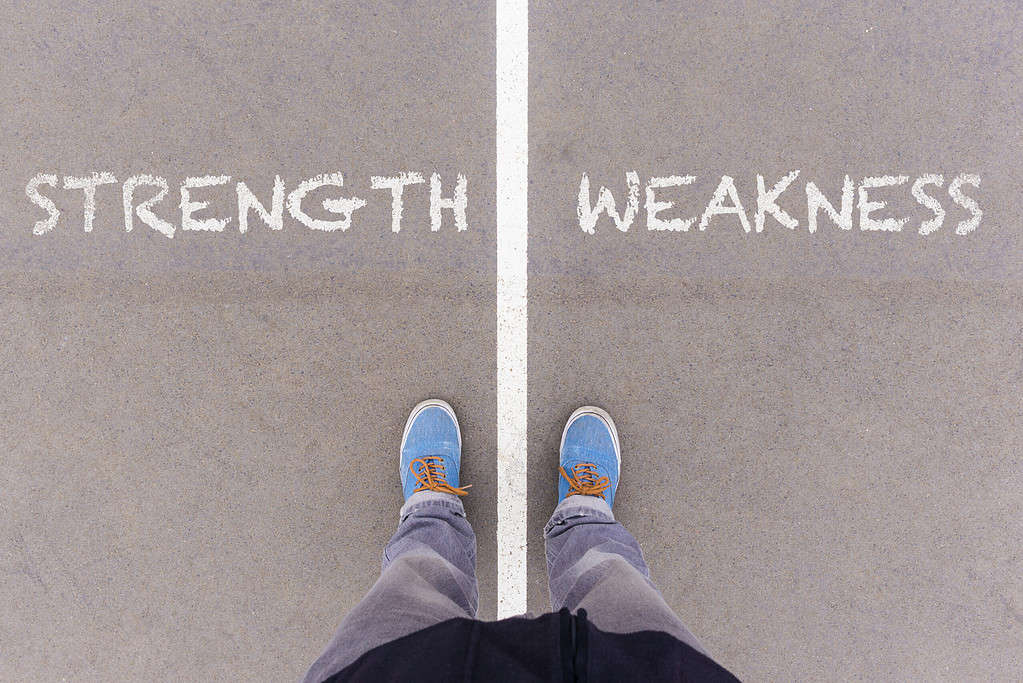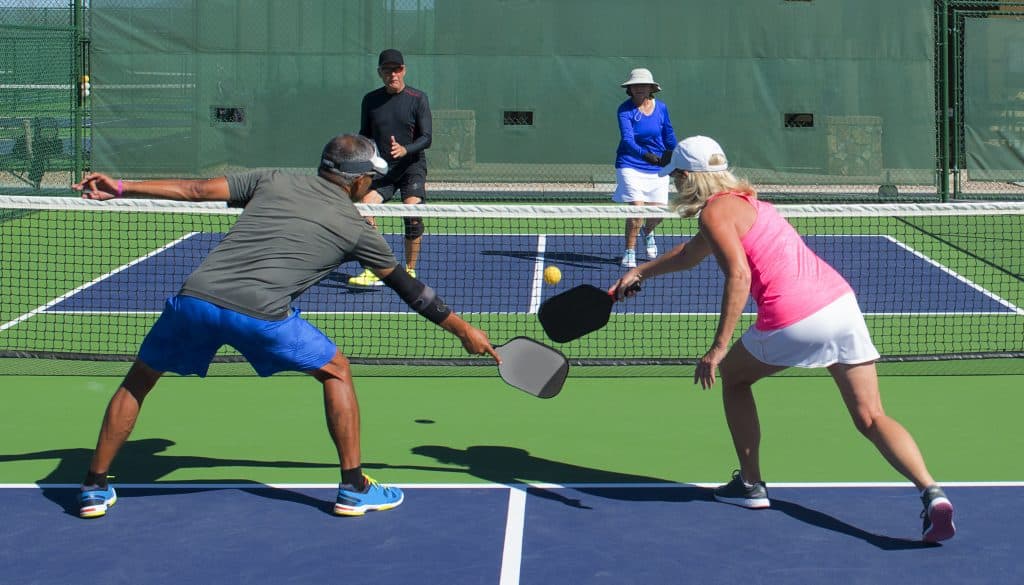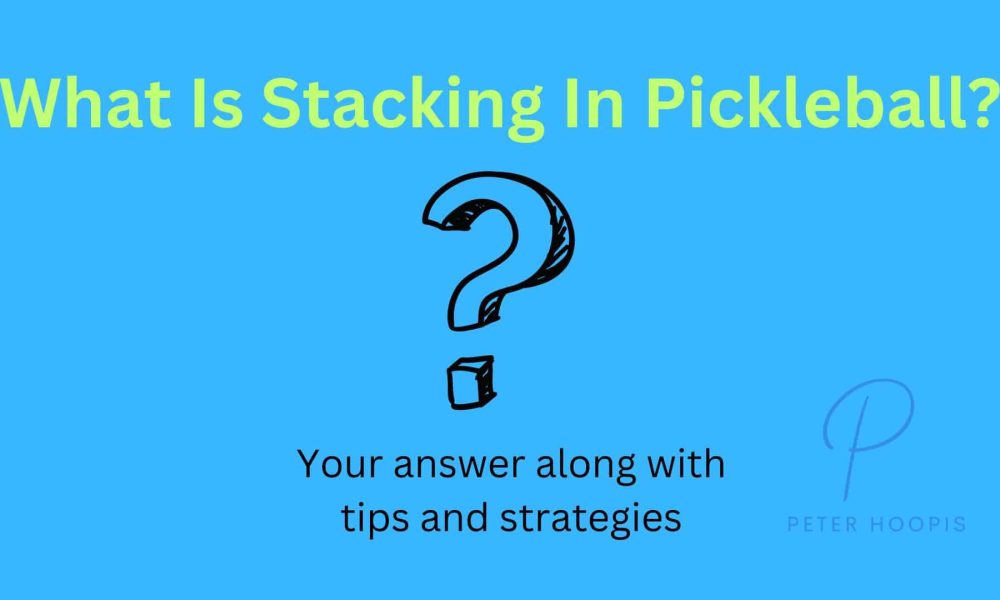As a pickleball player, you know that stacking is an essential strategy to gain the upper hand in doubles matches. But do you really know how to do it?
In this blog post, we help you answer the question of what is stacking in pickleball. We’ll dive deep into pickleball stacking rules and strategies, including full stacking and partial stacking, correct position, hand signals for communication between teammates, and legal ways to switch sides during play.
We’ll also explore how stacking can work to your advantage by capitalizing on stronger forehands or positioning at the non-volley line. Whether you’re new to the game or looking to up your strategy game, read on for everything you need to know about pickleball stacking.
Let’s get started.
What Is Stacking in Pickleball?
Stacking On The Serve
Traditional Stack
This strategy is when you are the serving team and you decide, as the server, you want to be on the other side of the court after you serve the ball to take an advantageous position.
So for example, you are serving from the even side of the court and you want to play from the odd side of the court. What we do is serve as you normally would but with your partner on the same side of the court as you. After you serve, you slide over to the odd or even depending on who is serving and what side you want to end up on. Pretty simple, straightforward and effective.
Switch Stack
As opposed to the traditional stack, which is pretty clear what you are trying to accomplish as the stacking team, the switch stack tries to avoid letting the receiving team know your intentions. This is helpful to keep your opponents guessing or if they are typically targeting someone on their return shot.
So what we do here is set up like normal, with each player in traditional positioning on their appropriate side of the court. However, after I serve, I am going to switch sides with my partner quickly so I end up on my preferred side of the court.
It is important to do this quickly as the returning team is going to be getting that ball back quickly. It is also very important to know who is going to slide in front and who is going to slide over in back. You definitely do not want to bump into your partner as you are switching sides of the court.
I like to have the server go in front and the non serving partner go behind as you switch to avoid being in the incorrect position. Great strategy to keep your opponents guessing!
Stacking on the Return
So, stacking on the serve is fairly straightforward and takes just a little coordination. However, stacking on the return is a little more involved.
Traditional Stack
We are set up in traditional positioning on the court, however, after the return we want to be on the opposite side of the court from where we are starting. Normally, without a switch, my partner is already at the non volley zone line and I am waiting for the return. After I return it, I just move forward up to the non volley zone line as well and we play from there.
BUT, with the switch, we have to execute this after I hit my return shot.
So what we do is change our initial set up. I am standing where I am supposed to for the return, lets say for example on the right side of the court. My partner moves to my side of the court just on the outside of the line to the right. As long as the returner is in the appropriate spot, my partner can be ANYWHERE on the court. This allows my partner to be close and slide into position after I return it while I move in a diagonal line cross court to get to the left side of the court up to the non volley position. So, in order to give yourself enough time to move that far, make sure you hit a nice deep return because those 3rd shots come back fast!
Switch Stack
So again, like the switch stack on the serve, you are trying to hide your preferred position. What we do is set up like completely normal. Me on my side in the return position and my partner on her side at the non volley zone.
After I hit my return shot, my partner slides over to her preferred side of the court while I run diagonally cross court to the non volley position on my preferred side. Again, you need to move fast here and hit a nice deep return shot to give yourself time.
But, as I mentioned, a major advantage to this type of stack is that the opposing team doesn’t know you are going to switch. This is where the communication piece becomes extremely important with your partner. You can’t just talk out loud and say let’s switch after you return it because your opponents might hear you.
So we use hand signals.
If we are doing a switch stack on the return, I am in my return position and my partner in her position at the non volley zone. She will either put a closed fist behind her back indicating no switch or an open hand indicating to me to switch. Clear, easy and effective yet again.
Stacking in pickleball is a strategic move that requires skill and teamwork, with traditional pickleball positioning involving both players standing on one side of the centerline until the serve and return. It’s important to know court regulations regarding stacking as well as proper positioning for serves and returns so you can make full use of this technique to outsmart opponents.
Summary

Pickleball is a sport that requires skill, strategy and teamwork. Stacking is one of the strategies used in doubles to take advantage of player strengths or exploit opponents weaknesses. It involves both players on the team to stand on one side of the centerline until the serve and return of serve happen, after which they rotate into their desired positions. This allows for the stacking serving team to position themselves in the most favorable places on the court to leverage their strengths or exploit other doubles teams’ weaknesses.
Stacking in pickleball is an important strategy that can help teams maximize their potential. By understanding the benefits of team stacks and partial stacking against opponents with weaker backhands, players can gain a significant edge over their competition.
Overall, understanding how to best utilize stacking as a strategy will give any pickleball team an edge over its competition. This can be done by maximizing communication between partners or taking advantage of receiving team or individual player strengths, ultimately leading them towards victory.
Stacking in pickleball is a sure-fire way to gain the upper hand on your opponents – by communicating effectively and capitalizing on individual player strengths, you can take home the win.
Tips For Using A Stacking Strategy
Stacking in pickleball is a strategy used by teams to allow themselves to get into their preferred positions to maximize their chances of winning. Here are some tips for making sure you’re getting the most out of stacking as a strategy.
Maximize Communication Between You and Your Partner
Obviously, one of the main advantages of stacking is that the other team does not know which side of the court each player will be on. So, you don’t want to announce to your partner that you are going to switch sides of the court so the other team can hear that. We like to use hand signals for this. One player will put a hand behind their back and either have a closed fist, or an open hand to indicate whether or not we are switching sides. Pretty simple and effective.
Take Advantage Of Player Strengths
When using stacking, teams can take advantage of their individual player strengths by positioning themselves accordingly based on who has better forehands or backhands or who has better defense versus the other player. This also helps for positioning if you have one left handed player and one right handed player on the team. Positioning players to take advantage of their individual strengths can provide an advantageous strategy that gives the team a competitive edge.
Recommended Article: The Best Pickleball Shoes For Men & Women
Tips For Playing Doubles in Traditional Play

Communication
Communicating with your partner is essential in doubles pickleball. This includes discussing strategy, calling out shots and locations on the odd side of the court, and talking through any potential issues that may arise during a match.
Positioning
Knowing traditional positioning and where to stand on particular side of the pickleball court can make or break a game of doubles pickleball; it’s important as a doubles team to know when to move up or back depending on what shot has been hit by your opponents.
Serve & Return
Serving and the returning serve are key elements of success in doubles – having an effective serve will put pressure on your opponents while being able to return difficult serves puts you at an advantage over them as well.
Shot Selection
Choosing which shots to play is critical for winning points in doubles pickleball; understanding when a powerful drive or the perfect dink should be played will help give you the edge over your opponents.
Court Awareness
Being aware of not only what’s happening around you but also how far away from each other both teams are standing can help you stay one step ahead throughout the entire game.
Recommended Article: Selkirk Pickleball Paddles
Common Mistakes To Avoid While Using The Stacking Strategy
When utilizing the stacking approach in pickleball, it is vital to avoid the typical missteps that can negatively affect your execution of the strategy. Improper positioning during serves and returns is one of the most frequent errors made by players who are new to this tactic. Proper positioning allows you and your partner to communicate more effectively while also maximizing your court coverage and avoid bumping into one another. This means being aware of where each player should be positioned at all times, especially when returning serves or shots from opponents.
Another mistake commonly seen when teams stack is failing to communicate effectively with your partner. Communication between partners is essential for success when using a stack formation as it helps them anticipate their opponent’s moves and adjust accordingly. Players must ensure that their placements on the court are accurate to make the most of a stack strategy, allowing them to cover more area and work together effectively. Players should practice communicating verbally as well as non-verbally through hand signals in order to maximize their effectiveness when playing stacked formations against opponents.
Finally, many players don’t understand traditional court positioning nuances which can lead to problems when trying out a stack formation for the first time. Understanding how each position affects play dynamics is key for successful stacking since even small changes in positions can affect shot selection, angles, and ball placement significantly during rallies or points exchanges with opponents. Being aware of these nuances will help you create an effective strategy that maximizes communication between partners while taking advantage of player strengths on either side of the net.
By avoiding the common mistakes outlined above, you can quickly become a more effective pickleball player when using the stacking strategy. With these tips for practicing the common pickleball stacking strategy in mind, you’ll be well on your way to becoming an expert.
Stacking in pickleball requires strategic positioning and effective communication between partners to ensure maximum coverage of the court. Players should be aware of traditional positions and court position nuances, as even small changes can have a big impact on shot selection, angles and ball placement during rallies or points exchanges with opponents. With practice comes perfection – so don’t forget to brush up on your stacking skills.
FAQs in Relation to What is Stacking in Pickleball
How do you learn to stack in pickleball?
There are a lot of great YouTube videos that can help with this. I really like the video from Briones Pickleball below.
What does it mean when players are stacked into a position?
Stacking is a strategy used in pickleball where two players from the same team position themselves on the same side of the court, then execute a switch in position. Stacking can be employed to gain a benefit, making it tougher for adversaries to place shots between the two players. Stacking also helps with defense and offense by allowing teammates to shift positions to leverage their strengths and exploit weaknesses.
Conclusion
To gain an edge, pickleball players can employ stacking tactics that involve leveraging the basic pickleball rules to their advantage and refining execution with practice. Practicing and understanding the rules of stacking can be the most advantageous position for those looking to gain an edge over their opponents; however, penalties may result if done incorrectly. Stacking offers players the capacity to direct their court placement, launch and guard more productively, as well as devise angles that adversaries find challenging to counter. With these advantages comes responsibility; stacking must be done within the rules or else penalties may occur so make sure you know them before trying this technique.
Come explore the world of pickleball and outdoor adventures with Peter Hoopis Ventures! Learn more about stacking, an important skill in your pickleball game, to take your game to the next level.


